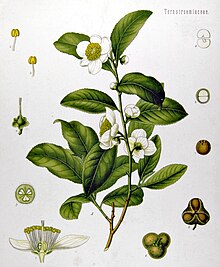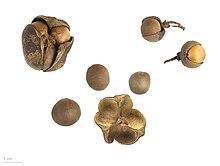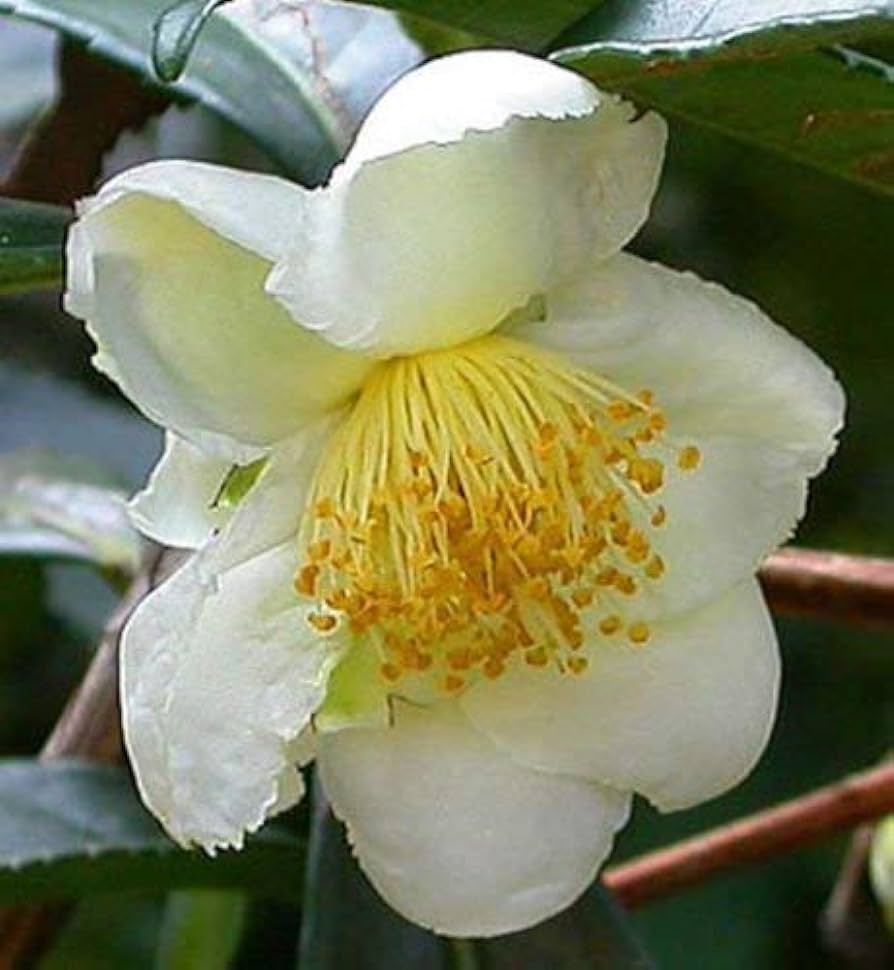-
CAMELLIA SINENSIS (TEA PLANT)
CAMELLIA SINENSIS (TEA PLANT)
Couldn't load pickup availability
MINIMUM TEMPERATURE SUPPORTED -6/8°C
(DATA REFERS TO AN ADULT PLANT IN OPTIMAL HUMIDITY AND SOIL CONDITIONS)
From Wikipedia, the free encyclopedia.
There tea plant ( Camellia sinensis ( L. ) Kuntze , 1881 it's a plant of the family Theaceae . All kinds of you originate from the processing of leaves , gods sprouts and other parts of this plant: only the processing methods differentiate the various types.
Etymology
The specific epithet sinensis in Latin it means Chinese . Camellia it derives instead from the Latinized name of reverend Georg Joseph Kamel ( 1661 - 1706 ), a Jesuit Czech that he was missionary in Philippines , be celebrated botanist . However, it was not Kamel who discovered the plant, much less who gave it its name: in fact it was Carlo Linnaeus , the creator of the taxonomy , still in use today, to choose the name of this genus in honor of the contribution that the Jesuit made to science. Other names of the plant in the past were Thea bohea , Thea sinensis (from which it was believed the black tea ) and Thea viridis (which was believed to be the origin of the green tea ). However, there are two different subspecies of Camellia sinensis , i.e Camellia sinensis sinensis , also called China (which reaches 5 meters in height), e Camellia sinensis assamica , called Assam , capable of reaching 11 metres.
Description


Camellia sinensis it is an erect shrub, with ovate-sharp leaves, with a toothed margin, of a shiny light green colour; the simple, small flowers, white in colour, bear numerous golden-yellow stamens; it is native to the continental part of South And Southeast Asia , but today it is cultivated throughout the world, especially in regions of tropical climate And subtropical .
In its natural state it can grow well over two meters but, to facilitate cultivation, it is generally kept at a size of bush evergreen or a small tree. The roots they are strong and flowers they can be white or yellow, dal diameter 4 centimeters and 7 or 8 petals.
The leaves are 4 to 15 cm long and 2 to 5 cm wide. A fresh leaf contains approximately 4%. caffeine . [1]
Uses
Oil
The seeds of Camellia sinensis they can be squeezed to obtain a sweetish oil used in cooking, not to be confused with the essential oil, the so-called "tea tree" oil ( tea tree oil in English), which is actually extracted from a different plant ( Melaleuca alternifolia ) and has cosmetic and medicinal uses. Tea seed oil is cold pressed from the seeds of Camellia oleifera you hate Camellia sinensis , in Japan also from the seeds of Camellia japonica , has a high smoke point (250 °C) and is the main cooking oil in some southern provinces of China , such as it Hunan .
Tea seed oil resembles olive oil and grape seed oil of grapes for its excellent preservation properties and reduced saturated fat content. Monounsaturated oleic acid can comprise up to 88% of fatty acids. It is rich in vitamin E ( antioxidant ) and other antioxidants and contains no natural trans fats.
In addition to its use as a condiment, for sauces, frying and the production of margarine , tea seed oil is used to make soap, hair oil, lubricants, paints, and a rust inhibitor oil as well as in the synthesis of other high molecular weight compounds. Japanese tea seed oil is used to treat wrestlers' hair sumo and for the Tempura (frying batter).
Beverage
Generally the younger leaves are destined for harvesting for the production of you and are characterized by light white or silver hair. Depending on the age of the leaf there are qualities of you different, since, with maturation, the chemical composition can undergo changes.
Based on the type of treatment to which the leaves of the Camellia sinensis it is possible to obtain products with different shapes, colours, aromas and flavours: by treating the leaves with heat immediately after harvesting, the green tea ; by drying them in the air you obtain the white tea ; by letting the leaves completely oxidize you obtain the tender ; Leaving them partially oxidized and then treating them with heat produces tea oolong .
The treated and dried tea leaves are used to prepare the drink of the same name through infusion or decoction.
Cultivation
Camellia sinensis it is cultivated mainly in areas tropical And subtropical , in which rainfall can reach 2 meters per year; the most suitable soil is acidic and permeable, without water stagnation. However, it is necessary to remember that this plant is cultivated on all continents, even in regions much further north than the aforementioned areas: this is the case of Cornwall [2] and of Washington State , USA United States . The ideal temperature is in fact between 10° and 30°C, and the crops can even be found at 2,500 m above sea level (it is precisely at higher altitudes that the finest teas are often obtained). The productive life of Camellia sinensis it generally begins 3-4 years after sowing, and lasts for a few decades, even if there are wild specimens that are more than a century old.
In Italy the cultivation of the tea plant began towards the end of the 19th century at the Botanical Garden of Pavia thanks to Giovanni Briosi , professor of botany and director of the garden from 1883 to 1919.
From the original plant in the 1930s Gino Pollacci [3] , also a professor of botany, managed to obtain one variety different that he called Camellia thea ticinensis , capable of resisting the freezing winter climate of Po Valley . During the 1930s, attempts were made to experiment with the large-scale production of this variety [4] . However, plants grown outside their natural environment had different concentrations of chemicals and nutrients. Consequently, the organoleptic characteristics of this you they failed to satisfy people's tastes. The result led to the abandonment of tea production ticinensis . [5]
Starting in the 1980s, Guido Cattolica began an experiment in the cultivation of Camellia sinensis , using seeds and seedlings obtained from the Botanical Garden of Lucca , planted in the Compitese area ( Capannori , LU). In this area, characterized by acid soils and a particular microclimate that make it the habitat ideal for camellias and acidophilic plants, the Camellia sinensis has found ideal conditions for its development. To date, around 800 plants have been planted, the leaves of which are regularly collected, processed and dried every year to produce small quantities of you .
RICHIEDI FOTO
RICHIEDI FOTO
Scrivimi su WhatsApp al +393472475878 per ricevere foto piante in vendita




